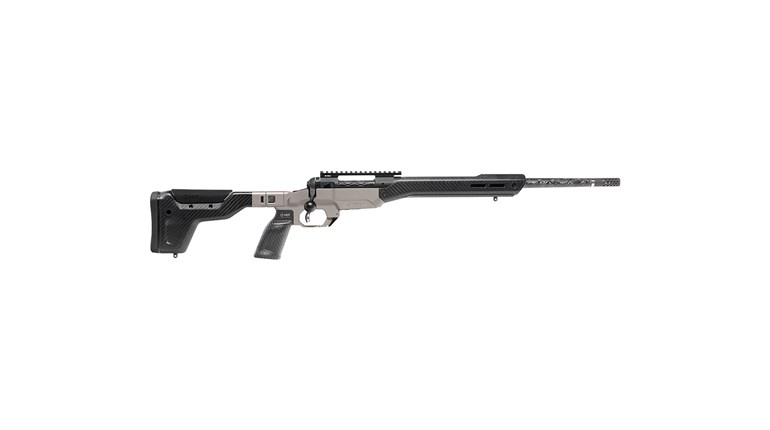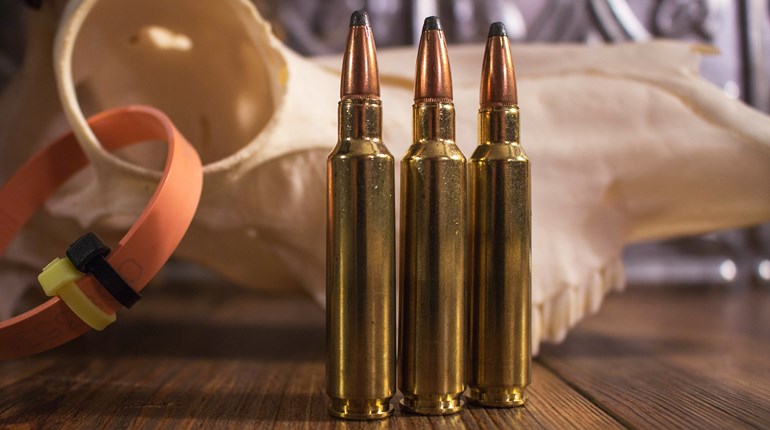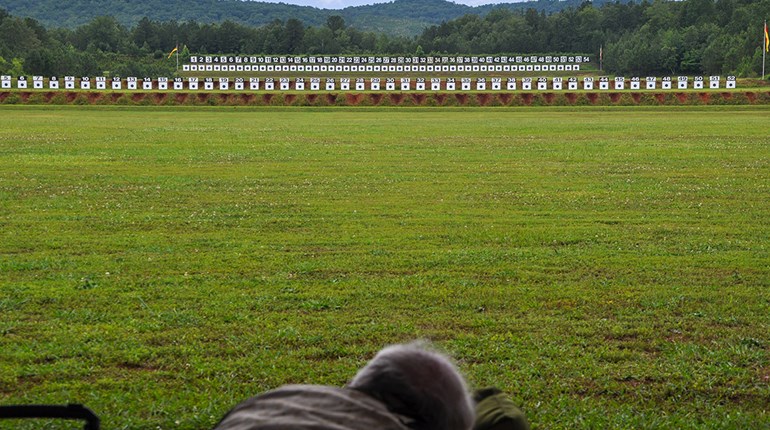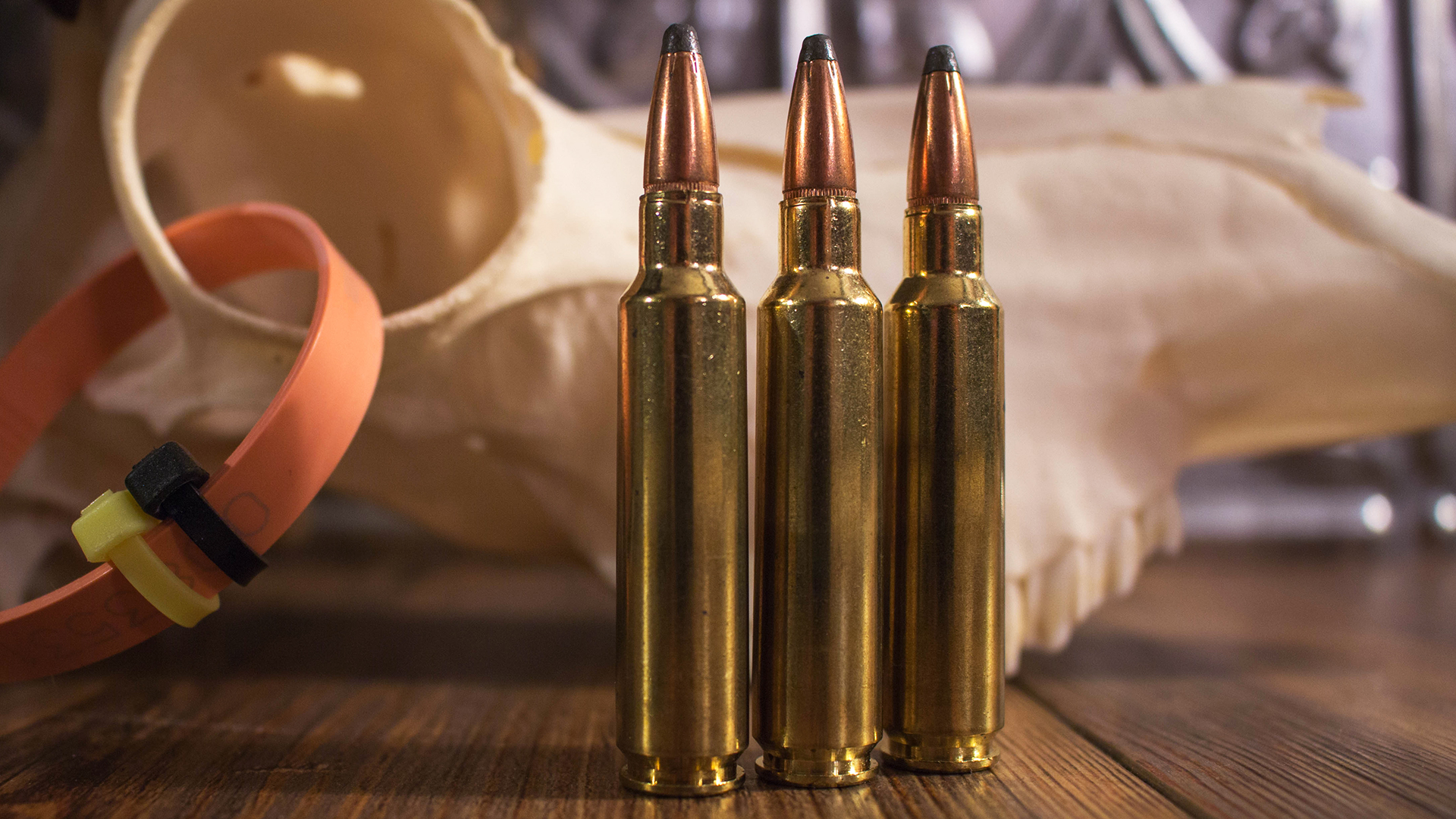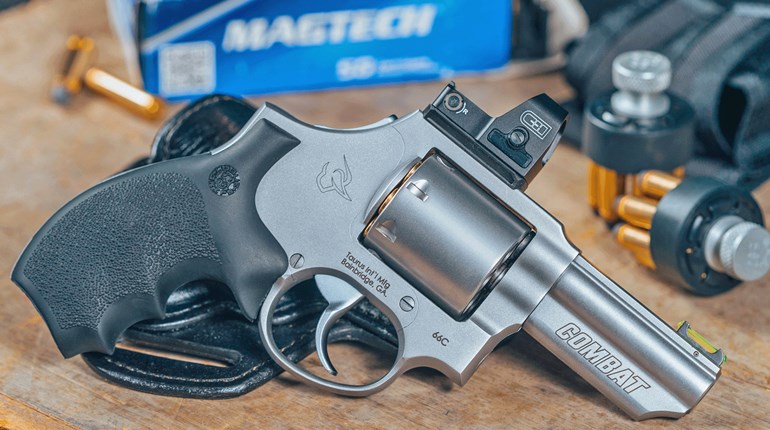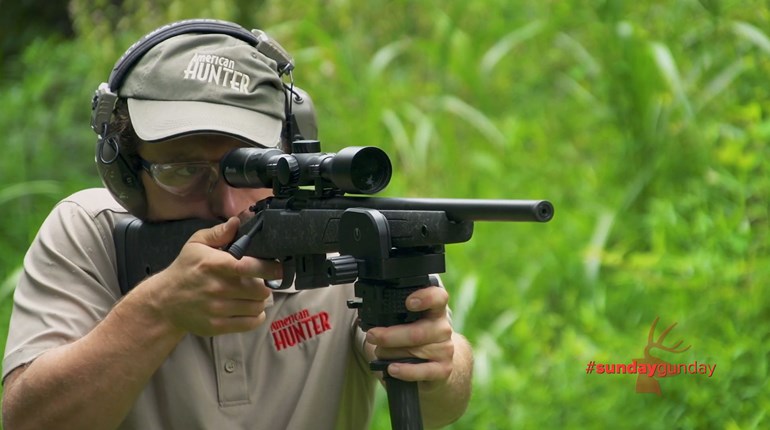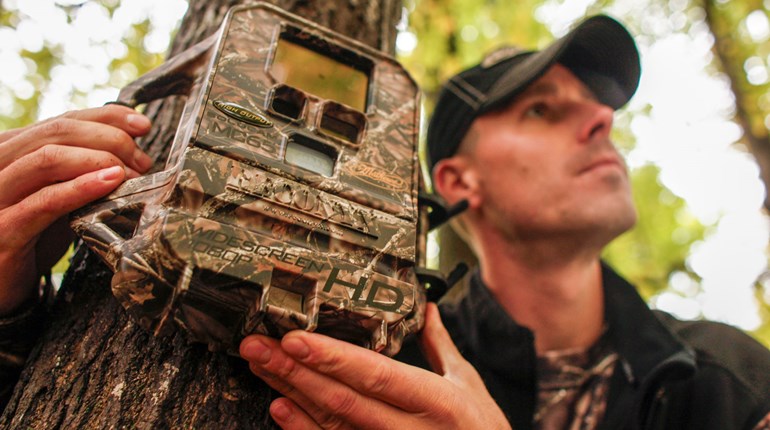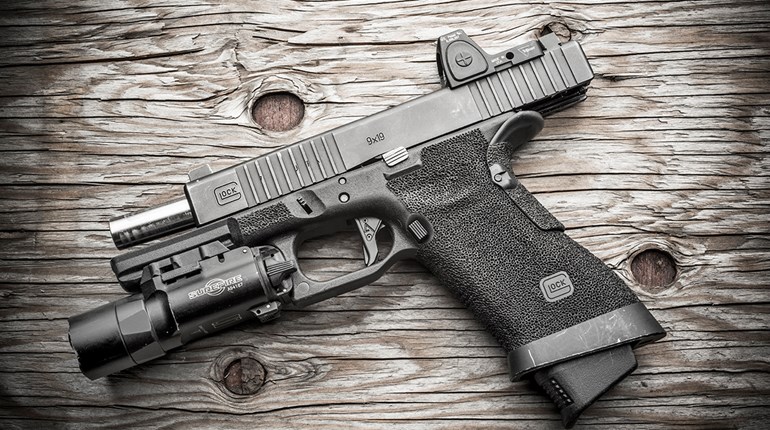
Hurriedly following professional hunter (PH) Brian van Blerk, we pulled up on the edge of a thicket in Zimbabwe’s Chirisa block, in pursuit of the best kudu bull I’ve ever personally seen. He spread the sticks—to the perfect height I might add—and told me that this bull knew we were there, and in less polite terms, instructed me to take the Texas Heart Shot. Quickly settling the fore-end of the rifle in the “vee” of the sticks, I broke the trigger, watching the kudu take one last leap forward before piling up. The 250-grain Woodleigh Weldcore was found up against the breastbone, having destroyed the lungs and top of the heart. That 55-inch bull is proudly displayed in my living room to this day.

The rifle? A custom-built .318 Westley Richards, based around a 1916 Amberg Arsenal Gewehr 98 Mauser. I had long dreamed of hunting Africa with such a classic caliber, and I happened to have a WWI Mauser with a bad barrel (having set, muzzle down, on the floor of a wet cellar for decades) which would make the perfect donor action. If ever there was a classic rifle design, one that would go on to spawn innumerable copies, it is the Mauser 98. The lever-action rifle is quintessentially American, and while there have been many modern improvements to our lever guns, the classic designs remain the most popular to this day. And while the vast majority of American hunters rely upon the multitude of popular American bolt-action rifles, they all owe a huge debt of gratitude to Paul Mauser’s turnbolt design.

Any aficionado of the bolt-action rifle (or turnbolt, as it is called across the pond) will be familiar—or should be familiar—with the attributes of the Gewehr 98, what with its dual locking lugs, non-rotating claw extractor, three position safety and fixed blade ejector. The earliest if the military models were equipped with a blind magazine, fed by a five-round stripper clip which could quickly and efficiently reload the rifle. As with many military designs—in both the cartridge and rifle departments—it would immediately find its way to the hunting fields, and many 7x57mm and 8x57mm rifles are still making meat to this day. There were a number of predecessors to the Mauser 98, but to many hunters, that Gewehr 98 has all the goods to make a fantastic hunting rifle. Looking at the M1903 Springfield, the Winchester Model 54 and Model 70, you can easily see the Mauser influence. In fact, the U.S. Government was forced to pay $250,000 in royalties to Mauser due to the design infringements.

Fast-forwarding from the end of the 19th century to the end of the 20th century, you’d find the bolt-action rifle taking over the hunting and target scenes, gaining an impeccable reputation for accuracy and reliability, as well as the ability to safely and precisely handle just about any cartridge designed. The Model 70—the Rifleman’s Rifle—would go through a series of design changes yet still maintain a fervent following, the Remington bolt guns of the early 20th century would bow down to the Model 700’s three rings of steel, and Bill Ruger’s M77—in a couple of different guises—would be the friend of the working man. Even Savage, long famous for its lever guns, would impress with the accuracy and affordability of their Model 110 bolt gun. Yet, in the custom rifle world, Paul Mauser’s 98 would remain a popular choice for building a custom gun. And, in the early part of the 21st century, I would have my first opportunity to shoot a modern Mauser 98.
Many of the famous African PHs in the Golden Age of safari relied upon the bolt-action repeating rifles, with a good number of them being either actual Mausers, or a Mauser-supplied action to another firm. John Rigby & Co. made a good number of their bolt rifles on Mauser 98 actions, including the .416 Rigby used by Harry Selby and made famous in Robert Ruark’s Horn of the Hunter. Col. Jim Corbett used a .275 Rigby/Mauser rifle to sort out a good number of man-eating tigers and leopards in Northern India, and the Hon. Denys Finch Hatton had a .350 Rigby in a Rigby rifle with a Mauser action. Imagine my elation when John Rigby & Co. announced that they would once again rekindle their relationship with Mauser, producing legitimate .416 Rigby rifles as they had between the World Wars. The Rigby Big Game rifle has proved to be a hit among those in pursuit of the larger species, and a wonderful opportunity for fans of the original design (of which less than 200 were made) to own a quality version of that rifle.

Rigby followed up with its Highland Stalker—a fine, svelte rifle designed in the tradition of Scottish deer-stalking rifles—again based on the Mauser 98 barreled action. I was fortunate enough to have a couple of opportunities to hunt with that rifle (a red stag hunt in Scotland with a .30-06, and a Texas deer/hog combo with a .275 Rigby HV) and found it to be a fantastic design and capable of ½-MOA groups.
With all of the technological advances since 1898—please consider that William McKinley was the President of the U.S., and that neither the airplane nor the Ford automobile were invented yet—why would Mauser’s 98 still be a relevant design? Well, like the Fender Telecaster guitar, the Chuck Taylor All-Star sneaker or the Hershey’s chocolate bar, Mauser got the Gewehr 98 right the first time. Yes, the military trigger was creepy, and the straight bolt and flag safety preclude the use of low-mounted optics (a feature Mauser probably couldn’t have foreseen), but change those features and you’ve got a fully functional hunting rifle, well-suited for the 21st century. If you are after the experience of hunting with a vintage rifle, a century-plus old Mauser 98 will not feel like a foreign object in your hands.

For the critics, who complain about lock time and the way the bolt chatters down the boltways of the receiver, I will ask them to remember that we are discussing a hunting rifle, one which will be fired in stressful situations, and which will need to be utterly reliable. I’ll tolerate the weebles and wobbles so long as the rifle hits where I aim it and cycles reliably. Speaking of vintage Mauser 98 actions, whether it may be the early Gewehr 98 or the later K98 Mausers, they are still a favorite among gun makers; I enjoy my .318 Westley Richards any time I can take it afield, whether it may be on an African safari or our deer/bear season here in the Catskill and Adirondack Mountains.
For the modern rifles, Rigby’s Highland Stalker or one of its London’s Best rifles built around a modern Mauser 98 action is a thing of beauty. Additionally, Mauser’s own M98 rifles are equally fantastic, and remain a good value. Both companies have made the revisions I highlighted above, and the end result is a rifle which makes logical and ergonomic sense. I think that if Deny Finch Hatton had the opportunity to pick up a modern Mauser or Rigby bolt gun, he wouldn’t hesitate at all, and despite the revisions to the action of late, he’d be able to adapt in a matter of seconds. Despite the 125 years that have passed since the introduction of the Gewehr 98, the timeless design still represents what many consider to be the pinnacle of bolt-action designs.












